You might be all hyped up about purchasing one of the newer GPU cards from either Nvidia or AMD, and with prices plummeting, that would be a justified purchase. But do you truly need one? Much like you, I thought I did. Then I looked at some older cards and found I could solve all of my gaming needs without forking over too much money.
I looked at a lot of cards while researching, and two that seemed very appealing throughout my search were Nvidia’s GeForce GTX 1070 and AMD’s Radeon RX 580. This GTX 1070 vs RX 580 comparison will walk you through their specs, including architecture, clock speeds, performance (of course), and pricing so that you can make an informed choice before you press “Buy.”
GTX 1070 vs RX 580 – Quick Comparison
| GTX 1070 | Specs | RX 580 |
|---|---|---|
| GP104-200-A1 | GPU | Polaris 20 XTX (215-0910038) |
| PCIe 3.0 x16 | Interface | PCIe 3.0 x16 |
| 1,920 (CUDA Cores) | Cores | 2,304 (Stream Processors) |
| 120 | TMUs | 144 |
| 12_0 | DirectX Version | 12_1 |
| 1,506 MHz | Base Clock (Founders Edition) | 1,257 MHz |
| 1,683 MHz | Boost Clock (Founders Edition) | 1,340 MHz |
| 8 GB GDDR5 | Memory | 8 GB GDDR5 & 4 GB GDDR5 |
| 2,002 MHz (8 Gbps effective) | Memory Speed | 2,000 MHz (8 Gbps effective) |
| 256.3 GB/s | Bandwidth | 256.0 GB/s |
| 256-bit | Memory Bus | 256-bit |
| 150 W | TDP (Founders Edition) | 185 W |
| 500 W | Required PSU (Founders Edition) | 500 W |
| 80℃ (176℉) | Max Recorded Temp (Founder Edition) | 75℃ (167℉) |
| 48.2dB | Max Fan Noise (Founders Edition) | 45.7dB |
| 1x DVI1x HDMI 2.03x DisplayPort 1.4a | Outputs (Founders Edition) | 1x HDMI 2.0b 3x DisplayPort 1.4a |
GTX 1070
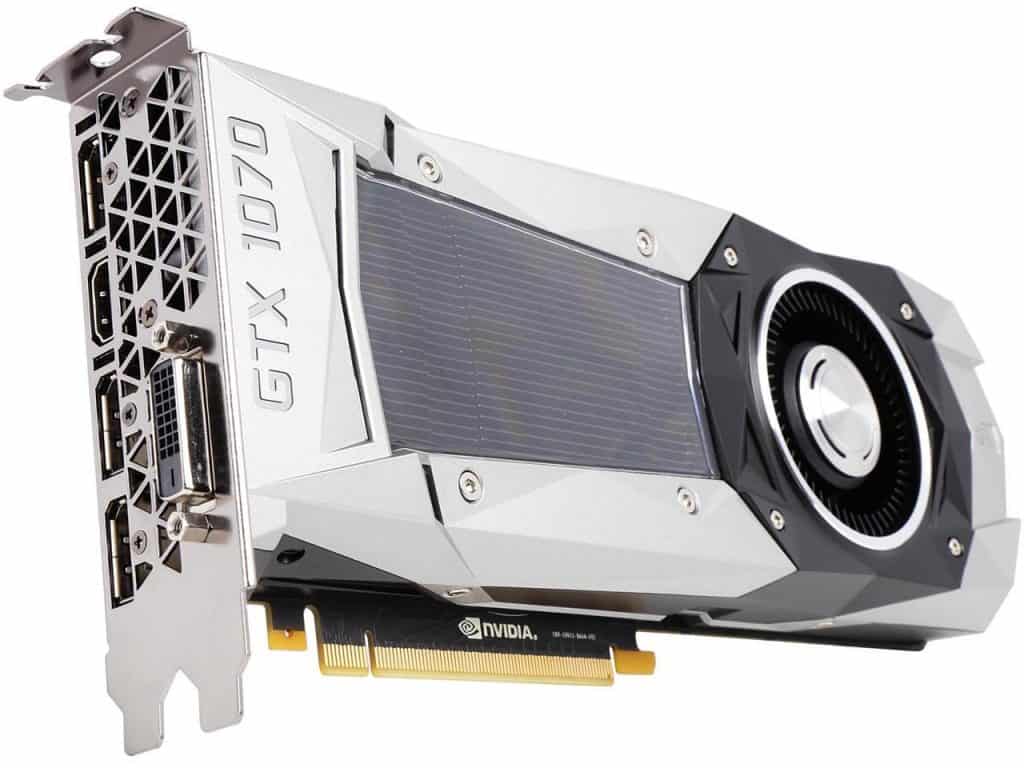
The GTX 1070 is one of three high-end cards from the GTX 10 series. It was released in June 2016. Nvidia claims, “Nothing rivaled this gaming beast when it came to performance-per-watt…” when referring to the GTX 1070 on its website. It featured an 8 GB GDDR5 VRAM, impressive clock speeds, and reliable performance overall.
Nvidia started almost 30 years ago based on the successful prediction of the gaming industry’s upcoming explosion. It was the first company ever to produce a GPU. Its GPUs are now the power behind virtually every AI and machine learning project.
Pros:
- Better performance
- Higher clock speeds
- Lower TDP
- Lower price
Cons:
- Higher temperatures
- Noisier
RX 580
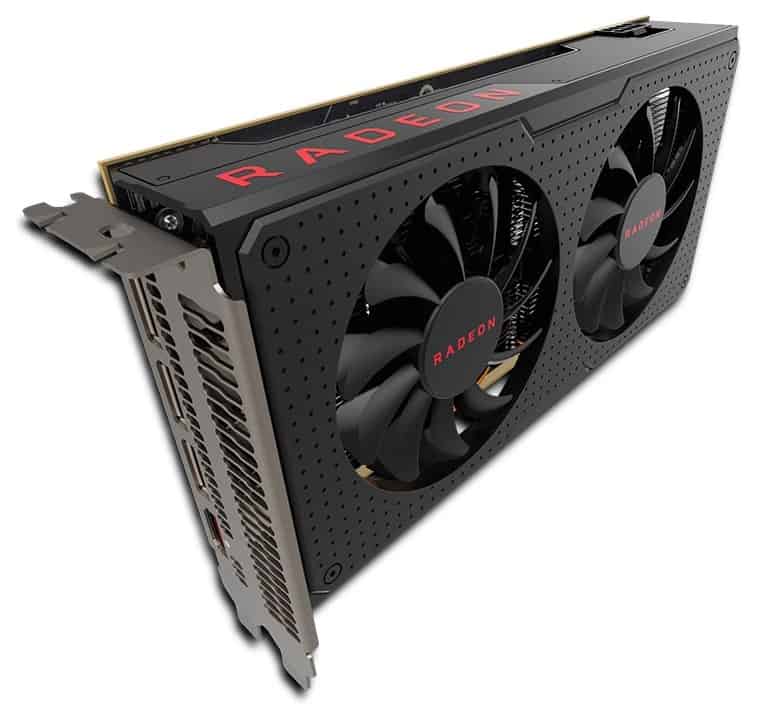
The RX 580 is a mid-range card from the RX 500 series and one of the best from that series. It was released in April 2017 in 4 GB and 8 GB GDDR5 versions. It was an updated RX 480 with better drivers (continuously updated for five years after release), higher clock speeds, and better VRAM. It offers performance that surpasses the GTX 1060 in some aspects but falls short of the 1070.
AMD is a Silicon Valley company founded over 50 years ago. It produces CPUs, GPUs, and motherboard chipsets and plays an important role in cloud computing. Many of its CPUs are the best I’ve ever used. Its GPUs aren’t always top-notch but are great nonetheless.
Pros:
- More cores
- Better texture rendering
- Lower temperatures
Cons:
- Outrageous (average) price
- Higher TDP
GTX 1070 vs RX 580 – Key Specifications
Architecture
AMD Polaris
Polaris, also known as GCN 4.0, was a better-fabricated version of GCN 3.0. These advancements in production allowed for better performance in the final product without pushing the envelope too far. It featured HBM2 (High Bandwidth Memory), HDR and VR capabilities, and solid mid-range performance. It was also featured in the PS4 Neo and the XBOX One X (Project Scorpio).
Nvidia Pascal
Pascal, on the other hand, was more of an improvement compared to Nvidia’s previous architecture. It also featured HBM2, HDR, VR, Fast Sync, and a bunch of tech geared toward Nvidia’s new focus, AI and machine learning. While this seems to have little impact on gamers, that tech works to their advantage as well.
Winner: GTX 1070
Design and Build
You won’t find the Founders Edition (FE) of either card easily, and if you do, it will certainly have to be second-hand. The GTX 1070 FE has a single-fan design, whereas the RX 580 has a twin-fan design. Almost 200 third-party variant cards are based on the GTX 1070’s design. The RX 580 has over 100 when you include both versions (4 and 8 GB).
Variations in design include variants with anywhere from one to three fans, enhanced cooling configurations, completely altered connection options, alterations in dimensions, and a few triple-slot builds in the GTX 1070’s case.
Winner: Draw
Clock Speeds & Overclocking
Clock speeds are the operating frequency of GPUs, CPUs, RAM, and VRAM. These speeds can be static or fluctuating. Fluctuating clock speeds are usually measured as “base” and “boost” clock speeds. “Base clock” speed is considered the lowest speed, though that’s not always true. “Boost clock” is the highest speed you should expect when gaming, but that’s not always the case either.
Older games that don’t need the full power of a GPU use lower speeds, and your card will drop to around 300 MHz when idle. I’ve also seen my card hit 1,965 MHz (without overclocking) even though its official boost clock is 1,830 MHz. So, take these next numbers with a grain of salt.
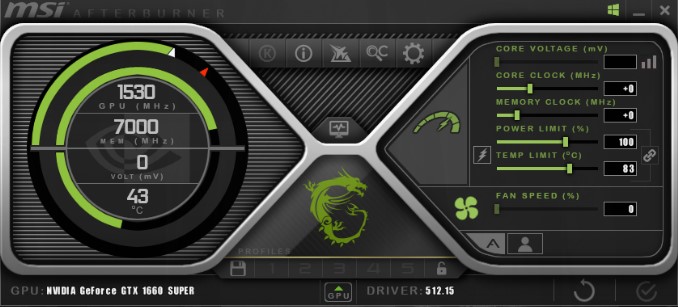
The GTX 1070 has a base clock of 1,506 MHz and a boost clock speed of 1,683 MHz. That’s above the RX 580’s 1,257 MHz base clock and its 1,340 MHz boost clock. Many people resort to overclocking to achieve higher speeds, and many third-party variants come factory-overclocked. Overall, the GTX 1070 is the better overclocker, according to user tests.
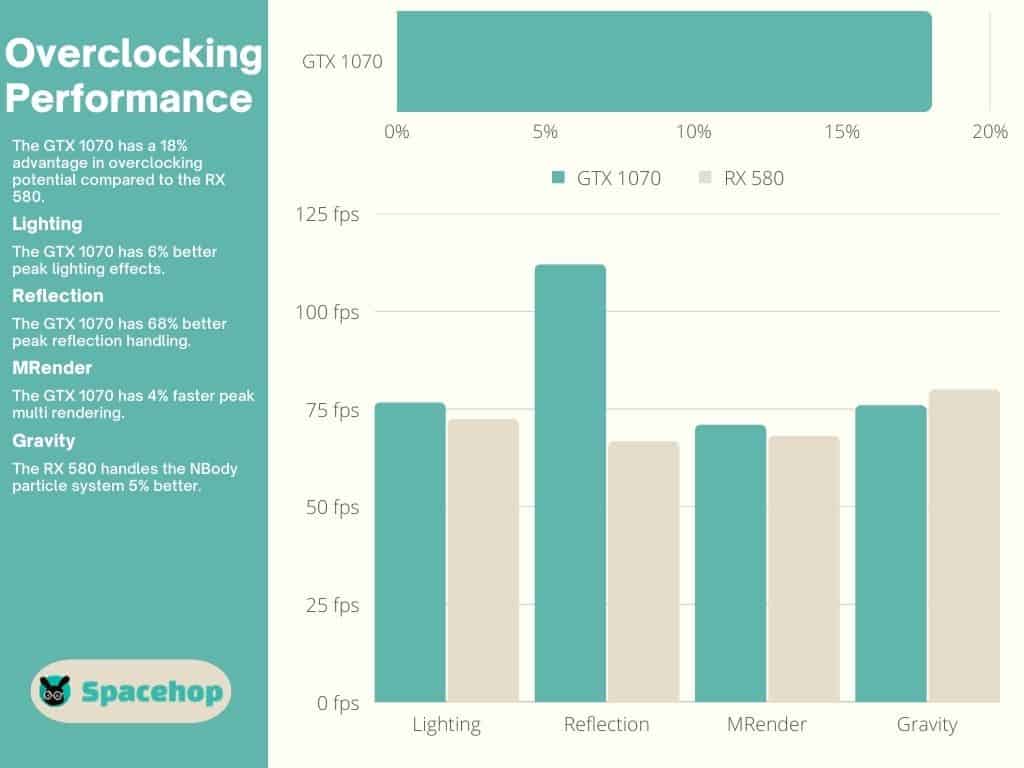
Personally, I don’t see any need to overclock cards that already work great, especially the factory-overclocked variants. You can do so if you choose, using dedicated software from Nvidia, AMD, or third-party software such as MSI Afterburner.
| Best GeForce GTX 1070 Variants | Boost Clock | Best Radeon RX 580 8 GB Variants | Boost Clock |
|---|---|---|---|
| Colorful iGame GTX 1070 Fire Ares X-TOP AD | 1,873 MHz | Sapphire NITRO+ RX 580 Limited Edition | 1,450 MHz |
| Gainward GTX 1070 Phoenix GLH | 1,873 MHz | XFX GTR-S RX 580 Black Limited Edition OC+ | 1,450 MHz |
| GIGABYTE GTX 1070 XTREME Gaming | 1,873 MHz | Dataland DEVIL RX 580 OC | 1,439 MHz |
| GIGABYTE GTX 1070 XTREME Gaming Rev. 2 | 1,873 MHz | MSI RX 580 GAMING X+ | 1,431 MHz |
| Palit GTX 1070 GameRock Premium Edition | 1,873 MHz | HIS RX 580 XTR IceQ X2 Roaring Turbo | 1,430 MHz |
Winner: GTX 1070
Also Read: How to Undervolt your CPU and GPU
Cores
Graphics Processing Units (GPUs) are parallel processors like your CPU. The difference is that GPUs have thousands of cores. The GTX 1070 has 1,920 cores called “CUDA” cores. They are divided into batches of 128 per “Streaming Multiprocessor” in the GP104 GPU.
AMD calls its cores “Stream Processors,” and a total of 2304 cores are in the RX 580. AMD divided them into batches of 64 per “Compute Unit” in the RX 580’s Polaris 20 XTX. Even though it has more cores, the RX 570 falls short in performance. This is because of some other graphics features where the GTX 1070 has the upper hand. This is where shaders come into play.
Shaders
Shaders are generic programs that leverage GPU cores to produce lights, shadows, characters, and other critical aspects of 3D rendering. While the GTX 1070 and the RX 580 share the same shader model (6.4), the 1070 features newer versions of OpenGL, OpenCL, Vulkan, and DirectX 12_1, all of which are shading languages, giving it an edge over the competition.
Ray Tracing
Another aspect of 3D rendering that’s frequently talked about is ray tracing. Previously only used by Hollywood in CGI movies, ray tracing was introduced to the gaming industry with Nvidia’s Turing architecture (Pascal’s successor). Nvidia released a DirectX Raytracing update in 2019 that enabled software-based ray tracing on some GTX 10 and GTX 16 cards, including the GTX 1070.

Don’t get your hopes up too high because this isn’t an RTX card. Enabling ray tracing will drop your Efps and leave you stuttering in most titles. The RX 580 never supported ray tracing, and AMD fans had to wait until the RX 6000 series to see AMD delve into the field.
TMUs
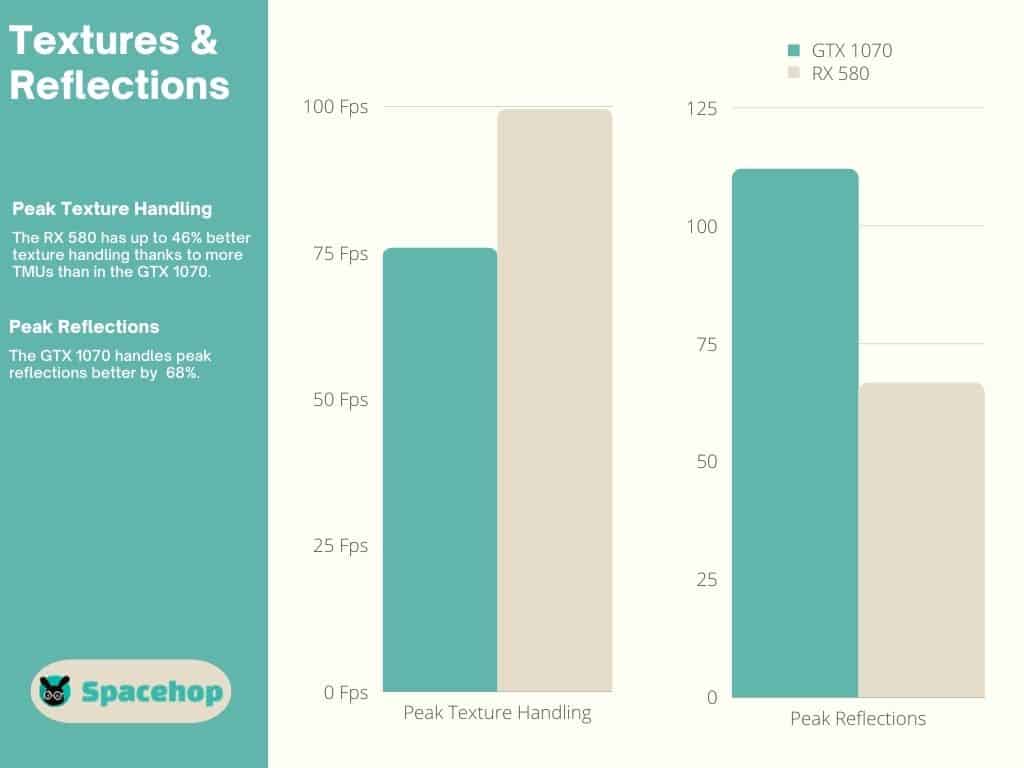
Texture Mapping Units, or TMUs for short, map textures within virtual 3D environments. AMD cards generally do better at handling textures, which is also the case in this RX 580 vs GTX 1070 comparison. It has more TMUs, with 144 compared to 120 in the GTX 1070.
Winner: GTX 1070
Also Read: Differences between GTX and RTX Explained
VRAM & Memory Specs
Both cards have almost identical VRAM configurations, with an 8 GB GDDR5 VRAM paired with a 256-bit BUS, delivering an effective 8 Gbps (2,000 MHz) and a bandwidth of 256 GB/s. The RX 580 was also released in a 4 GB version paired with the same memory BUS but delivering a lower clock speed (1,750 MHz), effective speed (7 Gbps), and bandwidth (224 GB/s).
Winner: Draw
Also Read: RAM vs VRAM: What are the key differences?
Performance
Good news, folks, both the GTX 1070 and the RX 580 can handle a number of games on ultra settings well. Of course, Fps drops as you go from 1080p to 4K, with the latter almost unplayable in some titles. Nevertheless, some of these tested titles came out after these cards did, making this a great result for cards this old.
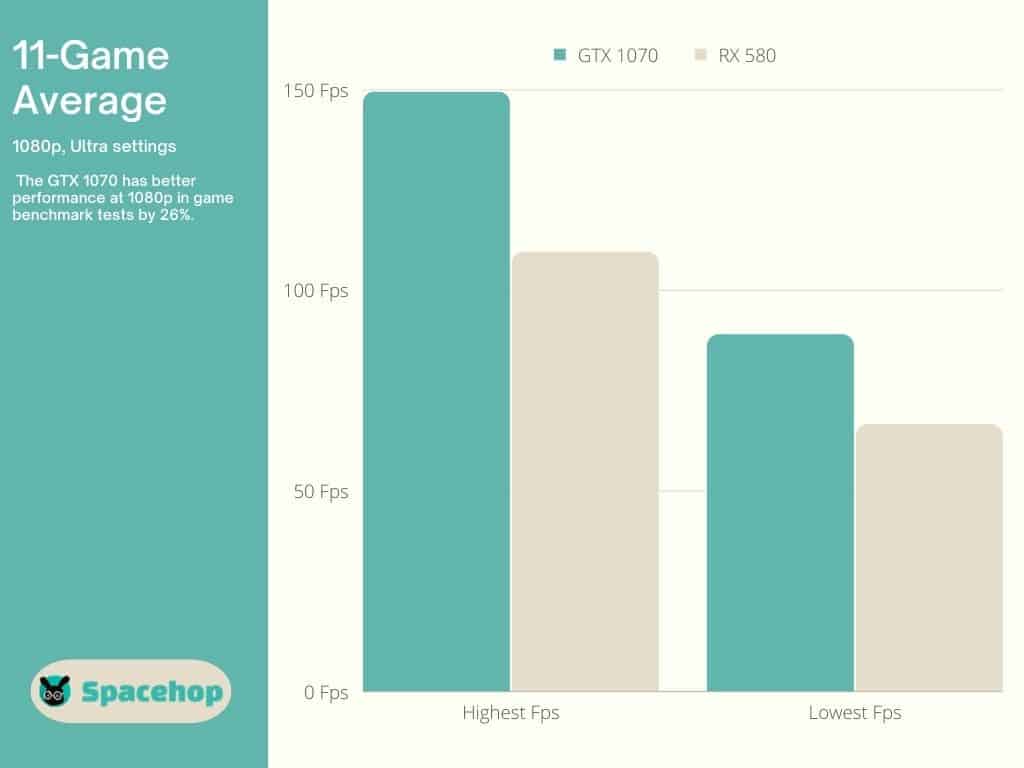
At 1080p, the GTX 1070 offers 26% better performance in benchmark tests.
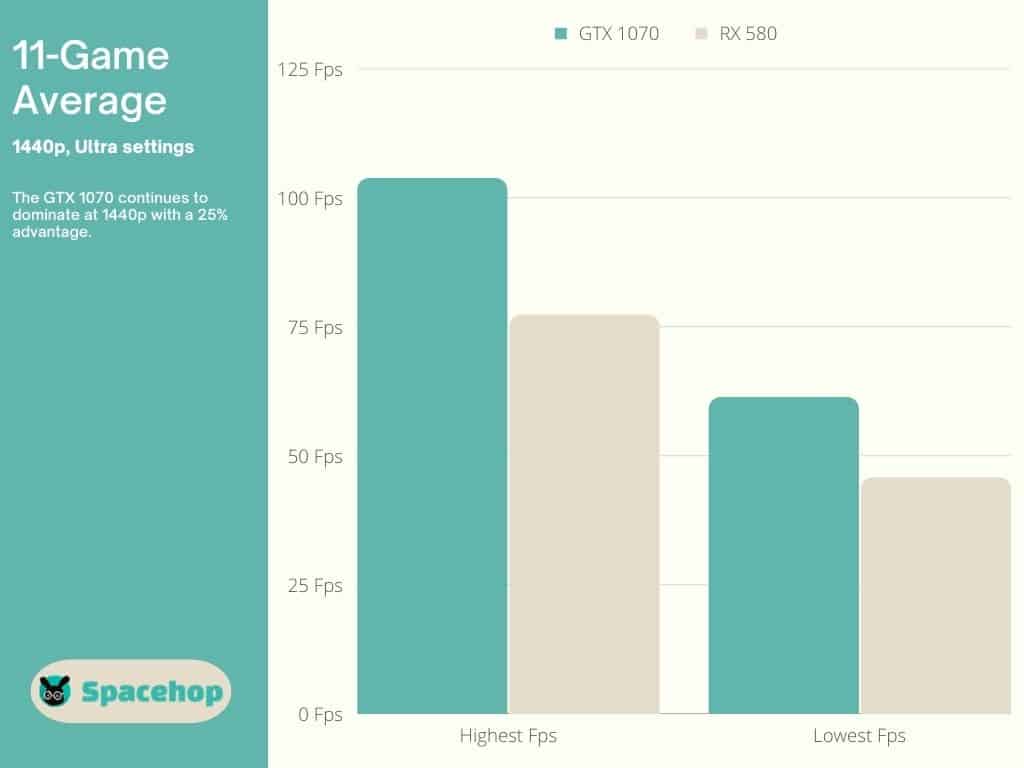
At 1440p, the GTX 1070 offers 25% better performance in benchmark tests.
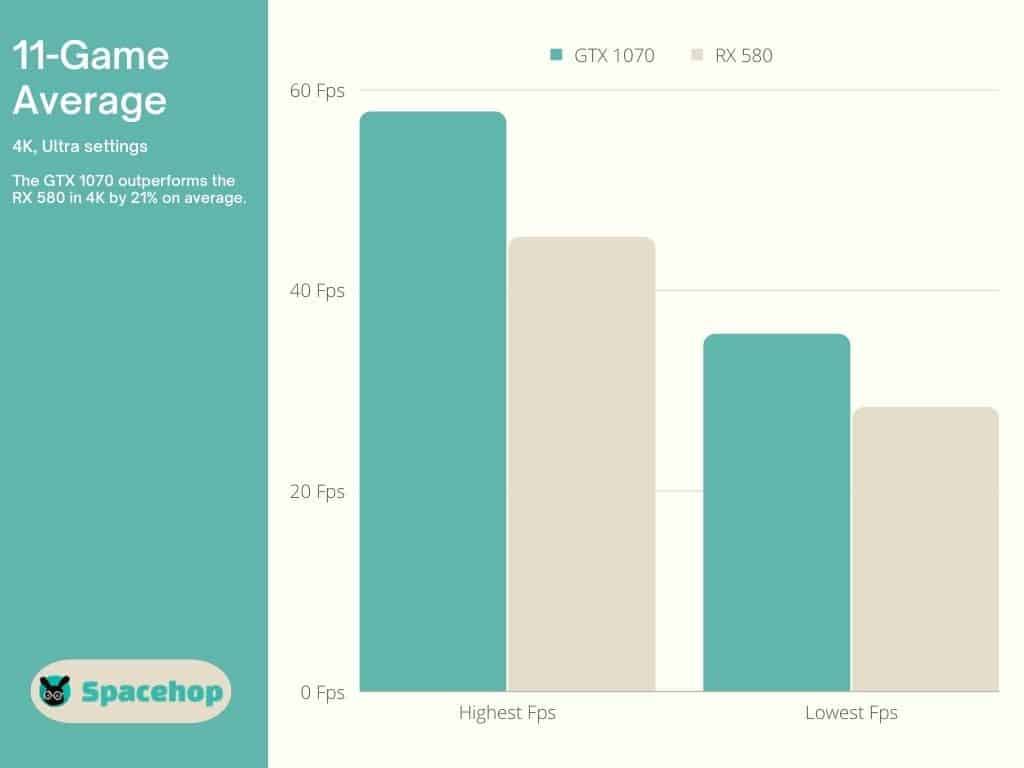
At 4K, the GTX 1070 offers 24% better performance in benchmark tests.
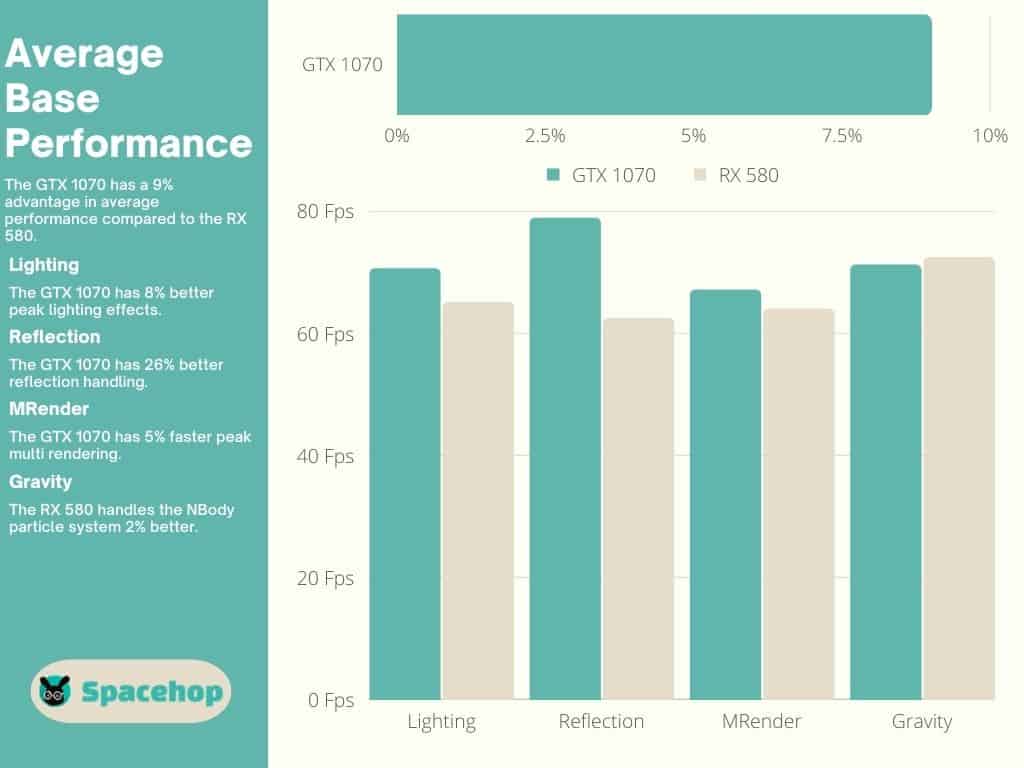
User tests tell a different tale, though still in the GTX 1070’s favor. Here the advantage drops to an average of 9% across all three resolutions. Its advantage drops to 4% in user tests of effective speed. Nevertheless, an advantage is an advantage, however small.
Winner: GTX 1070
Connectivity
The GTX 1070 FE features a DVI port, one HDMI port, and three DisplayPorts — that’s five potential screens. The RX 580 features one HDMI port and three Display ports, four screens in total. Third-party variants often have different configurations than these, so choose wisely according to your needs.
Winner: GTX 1070
TDP
When I talk about TDP, I’m referring to two things: Thermal Design Power and Thermal Design Point. The former is how much power a subsystem is allowed to draw from your PSU. The latter is how much heat a subsystem can produce.
The GTX 1070 draws less power (150 W) than the RX 580 (185 W). Both require a minimum 500 W PSU (as stated by the manufacturers). During testing, the GTX 1070 hit higher temperatures than the RX 580, reaching 80℃ (176°F). The RX 580 didn’t go above 75℃ (167°F) during my testing.
Winner: GTX 1070
RX 580 vs GTX 1070 – Standout Features
GTX 1070 DirectX Raytracing
The GTX 1070 supports basic software-based ray tracing. The RX 580 does not.
GTX 1070 vs RX 580 – Pricing & Availability
Upon their release, the GTX 1070 was priced at $379.99, and the RX 580 was priced at $229.99 (8 GB version) and $199.99 (4 GB version). Prices soared for a time, reaching double the original prices or more but have now died down again.
This was the cheapest deal for RX 580 8 GB I could find (17% below MSRP). Sapphire variants cost the most (51% and 138% above MSRP) and others range from 3% (XFX GTS XXX Edition) to 8% above (another XFX GTS XXX listing). This Chinese Jingsha variant is currently on sale at 13% below MSRP.
I found one renewed GTX 1070 FE variant priced 8% below the MSRP. The two best deals I found are from GIGABYTE and EVGA (55% below). This Pny variant follows close behind them, priced 52% below MSRP. This MSI Gaming variant is slightly more expensive, priced 21% below MSRP.
Amazon prices listed above are subject to change. All prices mentioned are at the time of publishing this article.
Conclusion
So, what have we learned from this GTX 1070 vs RX 580 comparison? We know they are worth it in 2022. That is, if you’re not aiming at playing the newest titles at the highest resolutions, either of these will do fine, even on ultra settings. They’re not great for 4K gaming, but they handle 1080p and 1440p very well.
The GTX 1070 is the better performer and costs less on average, so it’s obviously the better choice between the two. It also has a lower TDP, is the better overclocker, and has software-based raytracing. If it were me choosing for myself, I’d go with the GTX 1070 without a doubt!